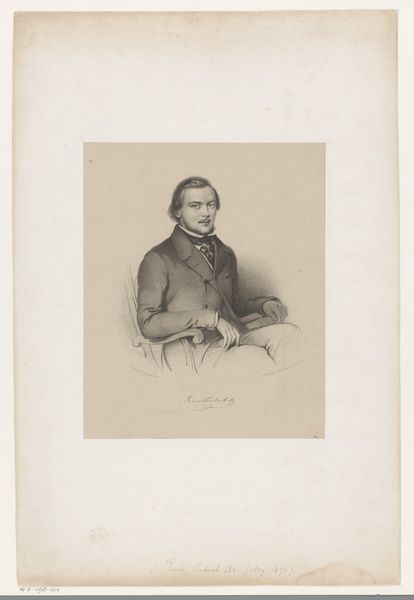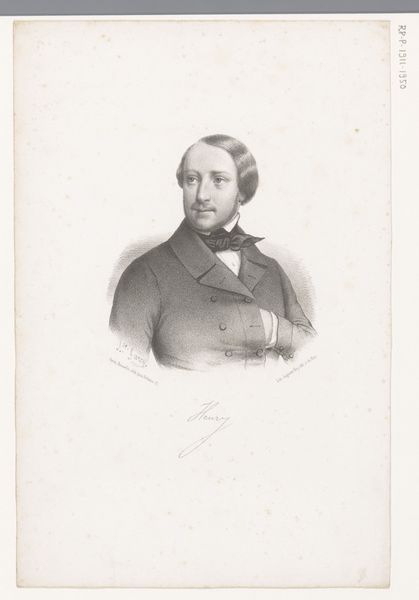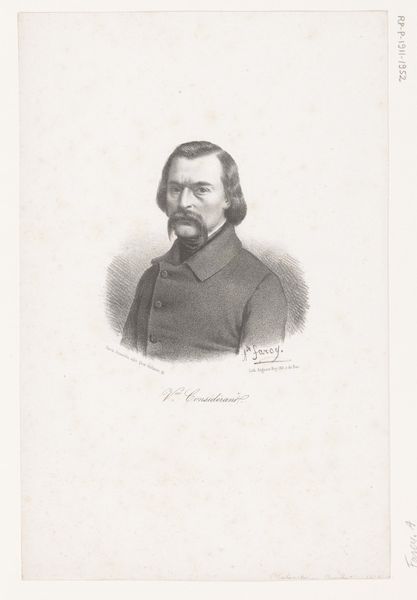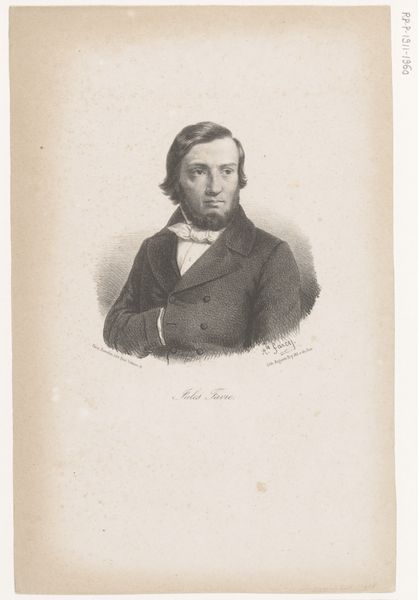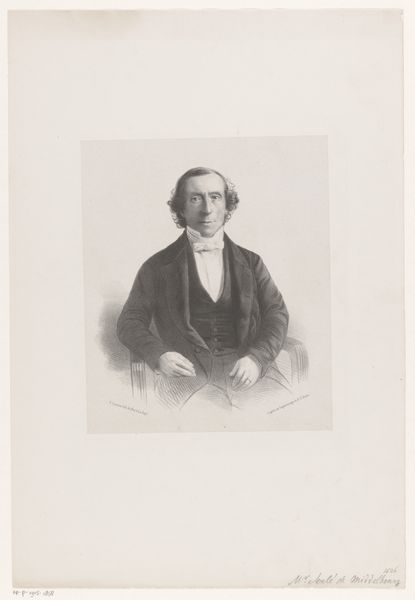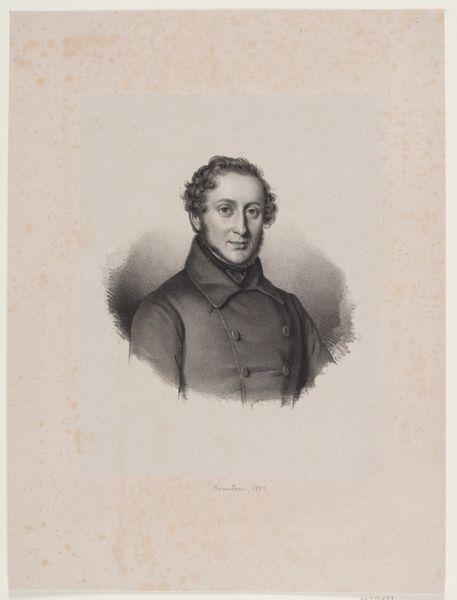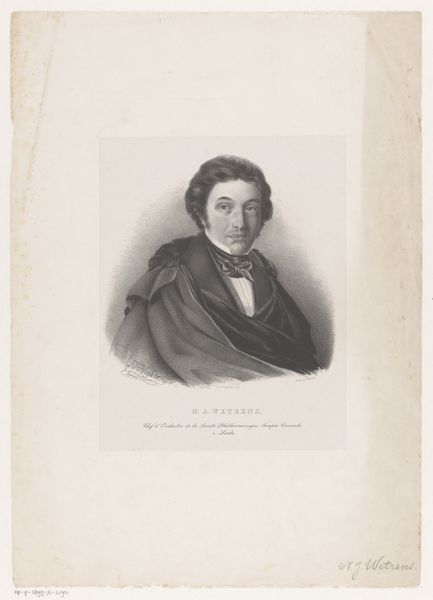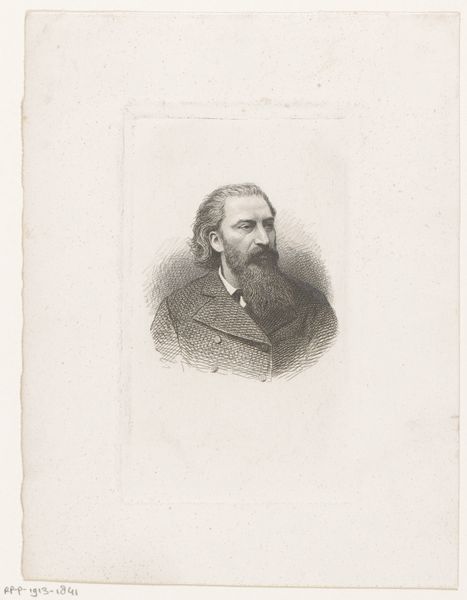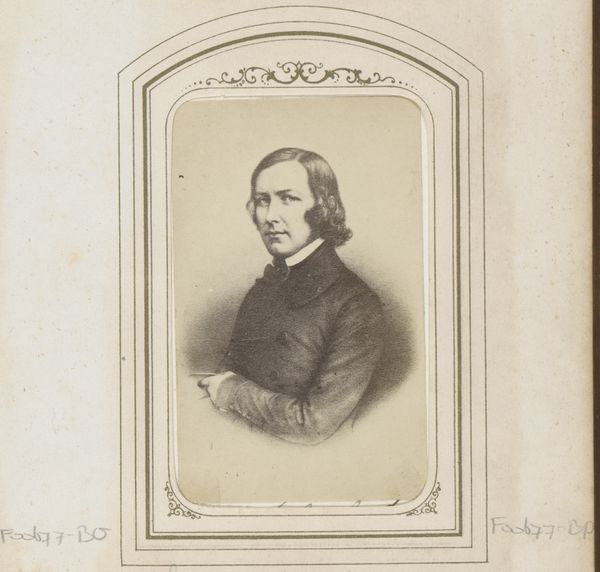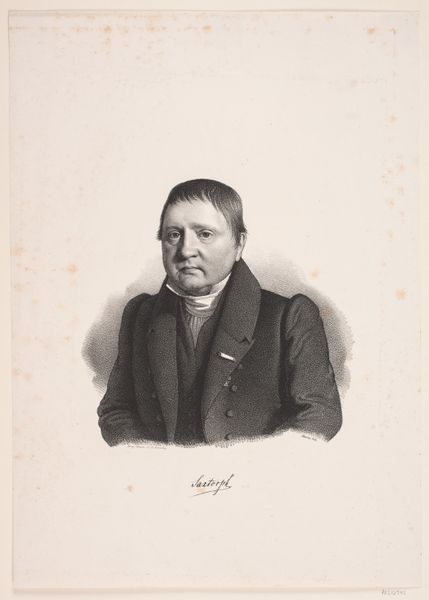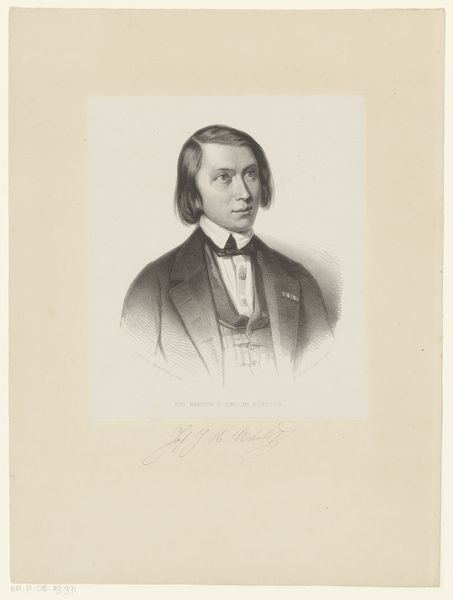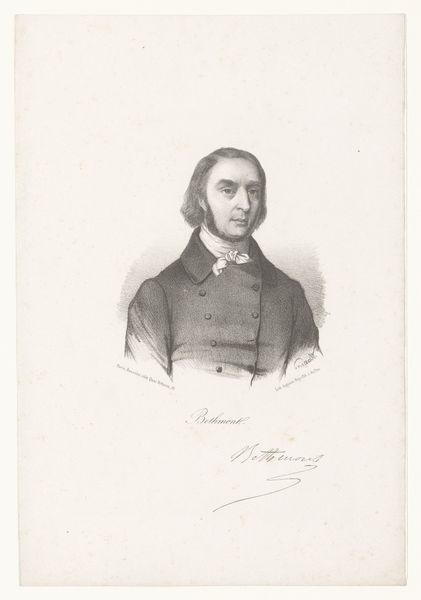
drawing, pencil
#
portrait
#
pencil drawn
#
drawing
#
amateur sketch
#
light pencil work
#
shading to add clarity
#
pencil sketch
#
personal sketchbook
#
pencil drawing
#
romanticism
#
pencil
#
limited contrast and shading
#
sketchbook drawing
#
pencil work
Dimensions: height 270 mm, width 181 mm
Copyright: Rijks Museum: Open Domain
Curator: The artwork before us is Alphonse Farcy's 1848 portrait of Pierre Leroux. Editor: It's immediately striking—the subdued quality. The hatching and cross-hatching of the pencil work give a real sense of depth, though restrained, almost melancholic. Curator: Yes, and Leroux was quite the figure during that time. He was a philosopher and political economist, advocating for a form of utopian socialism that became rather influential. This portrait captures him during a period of intense social and political upheaval in France. Editor: You can see that reflected in the sitter’s gaze—direct, but not confrontational. There’s a certain softness achieved through the medium itself. Pencil, in contrast to, say, oil paint, lends itself to a kind of quiet intimacy. Curator: Exactly! Farcy produced this around the time of the 1848 Revolution, so, there’s that fascinating interplay between Leroux's progressive ideas and Farcy’s artistic representation. It makes one wonder how Farcy's own political views informed the portrayal. Editor: Notice, too, how the artist focuses on the face, creating depth in the eyes and mouth, simplifying the rest. The collar and jacket are rendered with broad strokes, which emphasizes Leroux's presence without excessive detail. It draws attention to the face without clutter. Curator: And it's likely this piece was circulated through lithographs at the time, furthering Leroux's image. Print culture was how many of these thinkers reached wider audiences. This portrait thus serves not only as an artistic endeavor, but also a historical document. Editor: A rather elegant document. The subtle use of shading is superb. And, of course, the simple fact it is black and white offers an interesting exercise in stripping away the unnecessary. Curator: Thinking about it all now, the piece tells us a lot about how influential thinkers were visualized and presented within the broader social context of 19th-century France. Editor: Indeed, a simple yet quietly powerful exploration of form. Thank you for the illuminating social and historical details; they truly add layers to what I initially saw as just elegant simplicity.
Comments
No comments
Be the first to comment and join the conversation on the ultimate creative platform.
